Brain–Computer Interfacing Using Functional Near-Infrared Spectroscopy (fNIRS)
Abstract
1. Introduction
2. Steps in Implementing fNIRS-BCI
2.1. Data Acquisition
2.2. Feature Extraction
2.2.1. Wavelet Extraction
2.2.2. Hilbert Transform
2.3. ANN Classification Approaches
2.3.1. Probabilistic Neural Networks
2.3.2. Support Vector Machines
3. Challenges in fNIRS-BCI
4. Machine Learning in fNIRS
5. fNIRS-BCI Applications
6. Software for fNIRS-BCI
7. Future Directions
8. Other Neuroimaging Modalities
9. Conclusions
Author Contributions
Funding
Institutional Review Board Statement
Informed Consent Statement
Data Availability Statement
Acknowledgments
Conflicts of Interest
References
- Ferrari, M.; Quaresima, V. A brief review on the history of human functional near-infrared spectroscopy (fNIRS) development and fields of application. NeuroImage 2012, 63, 921–935. [Google Scholar] [CrossRef]
- Herold, F.; Wiegel, P.; Scholkmann, F.; Thiers, A.; Hamacher, D.; Schega, L. Functional near-infrared spectroscopy in movement science: a systematic review on cortical activity in postural and walking tasks. Neurophotonics 2017, 4, 041403. [Google Scholar] [CrossRef]
- Piantadosi, C.A. Early development of near-infrared spectroscopy at Duke University. J. Biomed. Opt. 2007, 12, 062102. [Google Scholar] [CrossRef]
- Abibullaev, B.; An, J. Classification of frontal cortex haemodynamic responses during cognitive tasks using wavelet transforms and machine learning algorithms. Med Eng. Phys. 2012, 34, 1394–1410. [Google Scholar] [CrossRef]
- Xu, K.; Chen, Y.; Okhai, T.A.; Snyman, L.W. Micro optical sensors based on avalanching silicon light-emitting devices monolithically integrated on chips. Opt. Mater. Express 2019, 9, 3985–3997. [Google Scholar] [CrossRef]
- Karim, H.; Schmidt, B.; Dart, D.; Beluk, N.; Huppert, T. Functional near-infrared spectroscopy (fnirs) of brain function during active balancing using a video game system. Gait Posture 2012, 35, 367–372. [Google Scholar] [CrossRef]
- Juan-Colás, J.; Parkin, A.; Dunn, K.E.; Scullion, M.G.; Krauss, T.; Johnson, S.D. The electrophotonic silicon biosensor. Nat. Commun. 2016, 7, 12769. [Google Scholar] [CrossRef]
- Buxton, R.B.; Uludag, K.; Dubowitz, D.J.; Liu, T. Modeling the hemodynamic response to brain activation. NeuroImage 2004, 23, S220–S233. [Google Scholar] [CrossRef]
- Stangl, M.; Bauernfeind, G.; Kurzmann, J.; Scherer, R.; Neuper, C. A Haemodynamic Brain–Computer Interface Based on Real-Time Classification of near Infrared Spectroscopy Signals during Motor Imagery and Mental Arithmetic. J. Near Infrared Spectrosc. 2013, 21, 157–171. [Google Scholar] [CrossRef]
- Naseer, N.; Hong, K.-S. fNIRS-based brain-computer interfaces: a review. Front. Hum. Neurosci. 2015, 9, 3. [Google Scholar] [CrossRef]
- Xu, G.; Li, X.; Li, D.; Liu, X. A DAQ-Device-Based Continuous Wave Near-Infrared Spectroscopy System for Measuring Human Functional Brain Activity. Comput. Math. Methods Med. 2014, 2014, 107320. [Google Scholar] [CrossRef]
- Lyu, B.; Pham, T.; Blaney, G.; Haga, Z.; Sassaroli, A.; Fantini, S.; Aeron, S. Domain adaptation for robust workload level alignment between sessions and subjects using fNIRS. J. Biomed. Opt. 2021, 26, 022908. [Google Scholar] [CrossRef]
- Rupawala, M.; Dehghani, H.; Lucas, S.; Tino, P.; Cruse, D. Shining a Light on Awareness: A Review of Functional Near-Infrared Spectroscopy for Prolonged Disorders of Consciousness. Front. Neurol. 2018, 9, 350. [Google Scholar] [CrossRef]
- Huppert, T.J.; Diamond, S.; Franceschini, M.A.; Boas, D.A. HomER: a review of time-series analysis methods for near-infrared spectroscopy of the brain. Appl. Opt. 2009, 48, D280–D298. [Google Scholar] [CrossRef]
- Falk, T.H.; Guirgis, M.; Power, S.; Chau, T.T. Taking NIRS-BCIs Outside the Lab: Towards Achieving Robustness Against Environment Noise. IEEE Trans. Neural Syst. Rehabilitation Eng. 2011, 19, 136–146. [Google Scholar] [CrossRef]
- Fekete, T.; Rubin, D.; Carlson, J.M.; Mujica-Parodi, L.R. The NIRS Analysis Package: Noise Reduction and Statistical Inference. PLoS ONE 2011, 6, e24322. [Google Scholar] [CrossRef]
- Santosa, H.; Hong, M.J.; Kim, S.-P.; Hong, K.-S. Noise reduction in functional near-infrared spectroscopy signals by independent component analysis. Rev. Sci. Instruments 2013, 84, 073106. [Google Scholar] [CrossRef]
- Kohno, S.; Miyai, I.; Seiyama, A.; Oda, I.; Ishikawa, A.; Tsuneishi, S.; Amita, T.; Shimizu, K. Removal of the skin blood flow artifact in functional near-infrared spectroscopic imaging data through independent component analysis. J. Biomed. Opt. 2007, 12, 062111. [Google Scholar] [CrossRef]
- Yücel, M.A.; Selb, J.; Aasted, C.M.; Petkov, M.P.; Becerra, L.; Borsook, D.; Boas, D.A. Short separation regression improves statistical significance and better localizes the hemodynamic response obtained by near-infrared spectroscopy for tasks with differing autonomic responses. Neurophotonics 2015, 2, 035005. [Google Scholar] [CrossRef]
- Sawan, M.; Kamranyi, E. Fully integrated CMOS avalanche photodiode and distributed-gain TIA for CW-fNIRS. In Proceedings of the 2011 IEEE Biomedical Circuits and Systems Conference (BioCAS), San Diego, CA, USA, 10–12 November 2011; IEEE: Piscataway, NJ, USA, 2011; pp. 317–320. [Google Scholar] [CrossRef]
- Hong, K.-S.; Khan, M.J.; Hong, M.J. Feature Extraction and Classification Methods for Hybrid fNIRS-EEG Brain-Computer Interfaces. Front. Hum. Neurosci. 2018, 12, 246. [Google Scholar] [CrossRef]
- Khan, M.J.; Hong, M.J.; Ehong, K.-S. Decoding of four movement directions using hybrid NIRS-EEG brain-computer interface. Front. Hum. Neurosci. 2014, 8, 244. [Google Scholar] [CrossRef]
- Renard, Y.; Lotte, F.; Gibert, G.; Congedo, M.; Maby, E.; Delannoy, V.; Bertrand, O.; Lécuyer, A. OpenViBE: An Open-Source Software Platform to Design, Test, and Use Brain–Computer Interfaces in Real and Virtual Environments. Presence Teleoper. Virtual Environ. 2010, 19, 35–53. [Google Scholar] [CrossRef]
- Mallat, S. A Wavelet Tour of Signal Processing. The Sparse Way, 3rd ed.; Academic Press: Cambridge, MA, USA, 2009. [Google Scholar] [CrossRef]
- Uludağ, K.; Steinbrink, J.; Kohl-Bareis, M.; Wenzel, R.; Villringer, A.; Obrig, H. Cytochrome-c-oxidase redox changes during visual stimulation measured by near-infrared spectroscopy cannot be explained by a mere cross talk artefact. NeuroImage 2004, 22, 109–119. [Google Scholar] [CrossRef]
- Strangman, G.; Culver, J.P.; Thompson, J.H.; Boas, D.A. A quantitative comparison of simultaneous BOLD fMRI and NIRS recordings during functional brain activation. Neuroimage 2002, 17, 719–731. [Google Scholar] [CrossRef]
- Chang, F.; Li, H.; Zhang, S.; Chen, C.; Liu, C.; Cai, W. Research progress of functional near-infrared spectroscopy in patients with psychiatric disorders. Forensic Sci. Res. 2021, 6, 141–147. [Google Scholar] [CrossRef]
- Coffey, E.B.; Brouwer, A.M.; Wilschut, E.S.; van Erp, J.B. Brain–machine interfaces in space: Using spontaneous rather than intentionally generated brain signals. Acta Astronaut. 2010, 6, 1–11. [Google Scholar] [CrossRef]
- Gratton, E.; Toronov, V.; Wolf, U.; Wolf, M.; Webb, A. Measurement of brain activity by near-infrared light. J. Biomed. Opt. 2005, 10, 011008. [Google Scholar] [CrossRef]
- Cui, X.; Bray, S.; Reiss, A.L. Speeded Near Infrared Spectroscopy (NIRS) Response Detection. PLoS ONE 2010, 5, e15474. [Google Scholar] [CrossRef]
- Wang, H.; Mao, W.; Zhao, S.; Gao, B.; Du, M.; Zheng, X.; Wang, C.; Zhang, C.; Zhang, J.; Hao, Y. High-performance reverse blocking p-GaN HEMTs with recessed Schottky and p-GaN isolation blocks drain. Appl. Phys. Lett. 2021, 119, 023507. [Google Scholar] [CrossRef]
- Chen, C.; Wen, Y.; Cui, S.; Qi, X.; Liu, Z.; Zhou, L.; Chen, M.; Zhao, J.; Wang, G. A Multichannel fNIRS System for Prefrontal Mental Task Classification with Dual-level Excitation and Deep Forest Algorithm. J. Sensors 2020, 2020, 1567567. [Google Scholar] [CrossRef]
- Huang, N.E.; Shen, Z.; Long, S.R.; Wu, M.C.; Shih, H.H.; Zheng, Q.; Yen, N.-C.; Tung, C.C.; Liu, H.H. The empirical mode decomposition and the Hilbert spectrum for nonlinear and non-stationary time series analysis. Proc. R. Soc. London. Ser. A Math. Phys. Eng. Sci. 1998, 454, 903–995. [Google Scholar] [CrossRef]
- Huang, N.E.; Shen, S.S.P. Hilbert-Huang Transform and Its Applications. Interdisciplinary Mathematical Sciences; World Scientific Publishing Company: Singapore, 2005. [Google Scholar] [CrossRef]
- Huang, N.E.; Attoh-Okine, N. (Eds.) The Hilbert-Huang Transform in Engineering, 1st ed.; CRC Press: Boca Raton, FL, USA, 2005. [Google Scholar] [CrossRef]
- Ghanbari, A.A.; Nazari Kousarrizi, M.R.; Teshnehlab, M.; Aliyari, M. Wavelet and Hilbert transform-based brain computer interface. In Proceedings of the 2009 International Conference on Advances in Computational Tools for Engineering Applications, Beirut, Lebanon, 15–17 July 2019; IEEE: Piscataway, NJ, USA, 2019; pp. 438–442. [Google Scholar] [CrossRef]
- Du, K.-L.; Swamy, M.N.S. Neural Network Design; PWS: Boston, MA, USA, 1995. [Google Scholar] [CrossRef]
- Yaqub, M.A.; Bhutta, M.R.; Park, J.; Hong, K. Development of a dual wavelength 32-channel functional near-infrared spectroscopy-based neuroimaging system. In Proceedings of the 17th International Conference on Control, Automation and Systems (ICCAS), Jeju, Korea, 18–21 October 2017; pp. 1024–1029. [Google Scholar]
- Kim, D.; Lee, J.J.; Chang, S.K.; Lee, J.H. Application of Probabilistic Neural Networks for Prediction of Concrete Strength. J. Mater. Civ. Eng. 2005, 17, 353–362. [Google Scholar] [CrossRef]
- Vapnik, V. Statistical Learning Theory. General & Introductory Statistics Statistics Special Topics; John and Wiley and Sons: Hoboken, NJ, USA, 1998. [Google Scholar]
- Mansour, Y.; Mohri, M.; Rostamizadeh, A. Domain adaptation: Learning bounds and algorithms. In Proceedings of the 22nd Conference on Learning Theory, Montreal, QC, Canada, 18–21 June 2009. [Google Scholar]
- Lazarou, I.; Nikolopoulos, S.; Petrantonakis, P.C.; Kompatsiaris, I.; Tsolaki, M. EEG-Based Brain–Computer Interfaces for Communication and Rehabilitation of People with Motor Impairment: A Novel Approach of the 21st Century. Front. Hum. Neurosci. 2018, 12, 14. [Google Scholar] [CrossRef] [PubMed]
- Tinga, A.M.; Clim, M.-A.; de Back, T.T.; Louwerse, M.M. Measures of prefrontal functional near-infrared spectroscopy in visuomotor learning. Exp. Brain Res. 2021, 239, 1061–1072. [Google Scholar] [CrossRef] [PubMed]
- Althobaiti, M.; Al-Naib, I. Recent Developments in Instrumentation of Functional Near-Infrared Spectroscopy Systems. Appl. Sci. 2020, 10, 6522. [Google Scholar] [CrossRef]
- Mackey, J.R.; Harrivel, A.; Adamovsky, G.; Lewandowski, B.E.; Gotti, D.J.; Tin, P.; Floyd, B.M. Effects of Varying Gravity Levels on fNIRS Headgear Performance and Signal Recovery; AIAA: Reston, VA, USA, 2013. [Google Scholar] [CrossRef][Green Version]
- Ben-David, S.; Blitzer, J.; Crammer, K.; Kulesza, A.; Pereira, F.; Vaughan, J.W. A theory of learning from different domains. Mach. Learn. 2010, 79, 151–175. [Google Scholar] [CrossRef]
- Kouw, W.M.; Loog, M. A Review of Domain Adaptation without Target Labels. IEEE Trans. Pattern Anal. Mach. Intell. 2021, 43, 766–785. [Google Scholar] [CrossRef]
- Kurmi, V.K.; Namboodiri, V.P. Looking back at labels: A class based domain adaptation technique. ArXiv 2019, arXiv:1904.01341. [Google Scholar]
- Shimodaira, H. Improving predictive inference under covariate shift by weighting the log-likelihood function. J. Stat. Plan. Inference 2000, 90, 227–244. [Google Scholar] [CrossRef]
- Peyré, G.; Cuturi, M. Computational Optimal Transport: With Applications to Data Science. Found. Trends® Mach. Learn. 2019, 11, 355–607. [Google Scholar] [CrossRef]
- Mémoli, F. Gromov–Wasserstein Distances and the Metric Approach to Object Matching. Found. Comput. Math. 2011, 11, 417–487. [Google Scholar] [CrossRef]
- Mellinger, J.; Schalk, G.; Braun, C.; Preißl, H.; Rosenstiel, W.; Birbaumer, N.; Kübler, A. An MEG-based brain–computer interface (BCI). NeuroImage 2007, 36, 581–593. [Google Scholar] [CrossRef]
- Solomon, J.; Peyré, G.; Kim, V.G.; Sra, S. Entropic metric alignment for correspondence problems. ACM Trans. Graph. 2016, 35, 1–13. [Google Scholar] [CrossRef]
- Johnstone, I.M.; Silverman, B.W. Wavelet Threshold Estimators for Data with Correlated Noise. J. R. Stat. Soc. Ser. B 1997, 59, 319–351. [Google Scholar] [CrossRef]
- Shih, J.J.; Krusienski, D.J.; Wolpaw, J. Brain-Computer Interfaces in Medicine. Mayo Clin. Proc. 2012, 87, 268–279. [Google Scholar] [CrossRef]
- Naito, M.; Michioka, Y.; Ozawa, K.; Ito, Y.; Kiguchi, M.; Kanazawa, T. A Communication Means for Totally Locked-in ALS Patients Based on Changes in Cerebral Blood Volume Measured with Near-Infrared Light. IEICE Trans. Inf. Syst. 2007, E90-D, 1028–1037. [Google Scholar] [CrossRef]
- Sitaram, R.; Zhang, H.; Guan, C.; Thulasidas, M.; Hoshi, Y.; Ishikawa, A.; Shimizu, K.; Birbaumer, N. Temporal classification of multichannel near-infrared spectroscopy signals of motor imagery for developing a brain–computer interface. NeuroImage 2007, 34, 1416–1427. [Google Scholar] [CrossRef]
- Ayaz, H.; Onaral, B.; Izzetoglu, K.; Shewokis, P.A.; McKendrick, R.; Parasuraman, R. Continuous monitoring of brain dynamics with functional near infrared spectroscopy as a tool for neuroergonomic research: empirical examples and a technological development. Front. Hum. Neurosci. 2013, 7, 871. [Google Scholar] [CrossRef]
- Derosiere, G.; Dalhoumi, S.; Perrey, S.; Dray, G.; Ward, T. Towards a Near Infrared Spectroscopy-Based Estimation of Operator Attentional State. PLoS ONE 2014, 9, e92045. [Google Scholar] [CrossRef] [PubMed]
- Khan, M.J.; Hong, K.-S. Passive BCI based on drowsiness detection: an fNIRS study. Biomed. Opt. Express 2015, 6, 4063–4078. [Google Scholar] [CrossRef] [PubMed]
- Mihara, M.; Miyai, I.; Hattori, N.; Hatakenaka, M.; Yagura, H.; Kawano, T.; Okibayashi, M.; Danjo, N.; Ishikawa, A.; Inoue, Y.; et al. Neurofeedback Using Real-Time Near-Infrared Spectroscopy Enhances Motor Imagery Related Cortical Activation. PLoS ONE 2012, 7, e32234. [Google Scholar] [CrossRef]
- Raggam, P.; Bauernfeind, G.; Wriessnegger, S.C. NICA: A Novel Toolbox for Near-Infrared Spectroscopy Calculations and Analyses. Front. Aging Neurosci. 2020, 14, 26. [Google Scholar] [CrossRef]
- Wyser, D.; Lambercy, O.; Scholkmann, F.; Wolf, M.; Gassert, R. Wearable and modular functional near-infrared spectroscopy instrument with multidistance measurements at four wavelengths. Neurophotonics 2017, 4, 041413. [Google Scholar] [CrossRef]
- Lühmann, A.E.; Herff, C.; Eheger, D.; Schultz, T. Toward a Wireless Open Source Instrument: Functional Near-infrared Spectroscopy in Mobile Neuroergonomics and BCI Applications. Front. Hum. Neurosci. 2015, 9, 617. [Google Scholar] [CrossRef] [PubMed]
- Uchitel, J.; Vidal-Rosas, E.E.; Cooper, R.J.; Zhao, H. Wearable, Integrated EEG–fNIRS Technologies: A Review. Sensors 2021, 21, 6106. [Google Scholar] [CrossRef]
- Belluscio, V.; Casti, G.; Ferrari, M.; Quaresima, V.; Sappia, M.S.; Horschig, J.M.; Vannozzi, G. Modifications in Prefrontal Cortex Oxygenation in Linear and Curvilinear Dual Task Walking: A Combined fNIRS and IMUs Study. Sensors 2021, 21, 6159. [Google Scholar] [CrossRef]
- Buccino, A.P.; Keles, H.; Omurtag, A. Hybrid EEG-fNIRS Asynchronous Brain-Computer Interface for Multiple Motor Tasks. PLoS ONE 2016, 11, e0146610. [Google Scholar] [CrossRef] [PubMed]
- Alhudhaif, A. A novel multi-class imbalanced EEG signals classification based on the adaptive synthetic sampling (ADASYN) approach. PeerJ Comput. Sci. 2021, 7, e523. [Google Scholar] [CrossRef] [PubMed]
- Rieke, J.D.; Matarasso, A.K.; Yusufali, M.M.; Ravindran, A.; Alcantara, J.; White, K.D.; Daly, J.J. Development of a combined, sequential real-time fMRI and fNIRS neurofeedback system to enhance motor learning after stroke. J. Neurosci. Methods 2020, 341, 108719. [Google Scholar] [CrossRef]
- Pinti, P.; Siddiqui, M.F.; Levy, A.D.; Jones, E.J.H.; Tachtsidis, I. An analysis framework for the integration of broadband NIRS and EEG to assess neurovascular and neurometabolic coupling. Sci. Rep. 2021, 11, 1–20. [Google Scholar] [CrossRef]
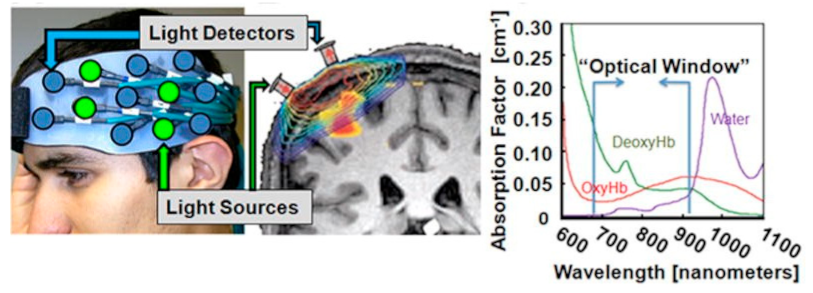

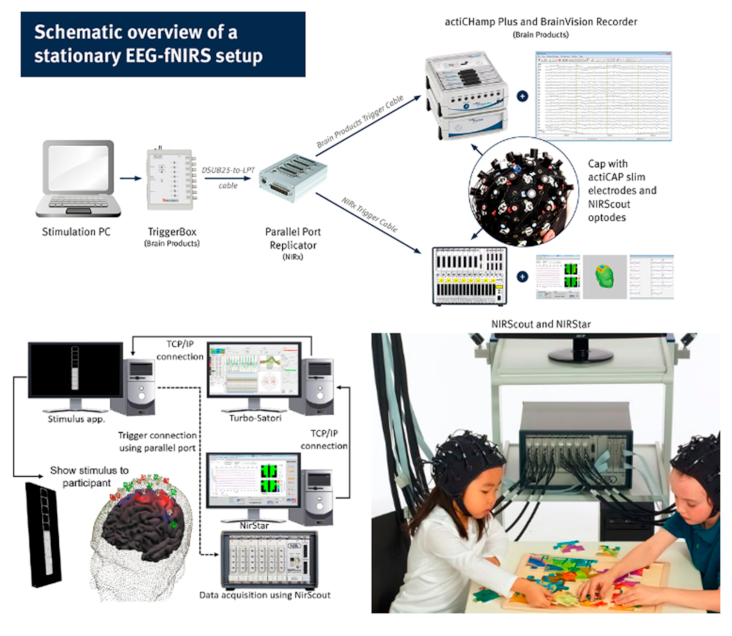
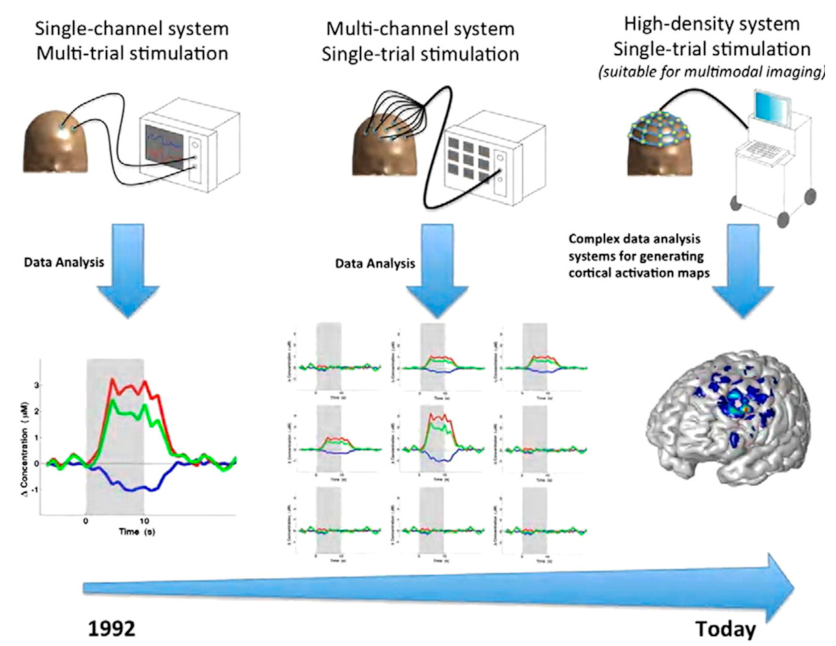



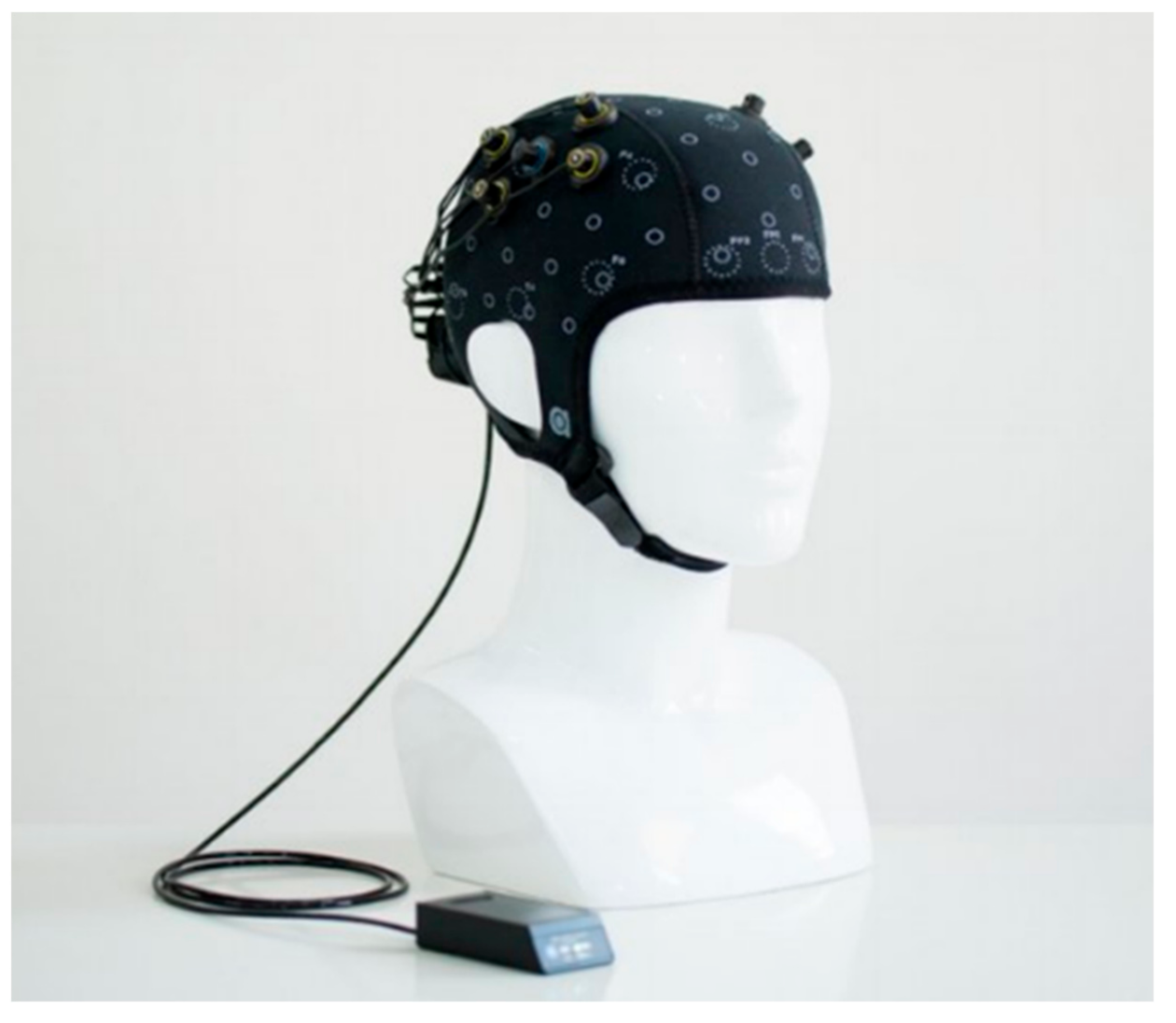

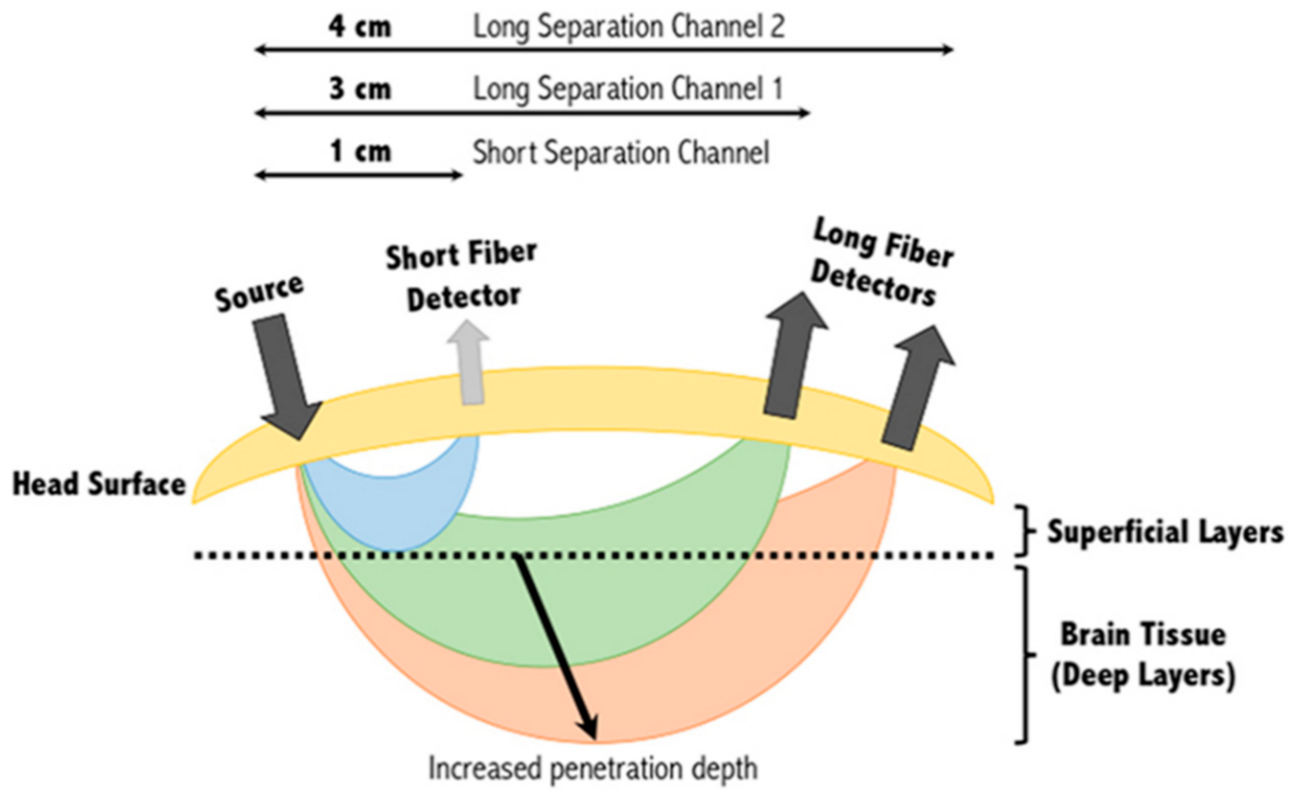


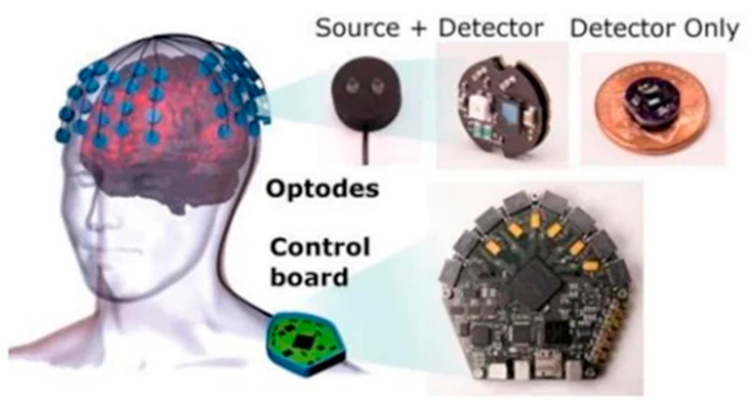
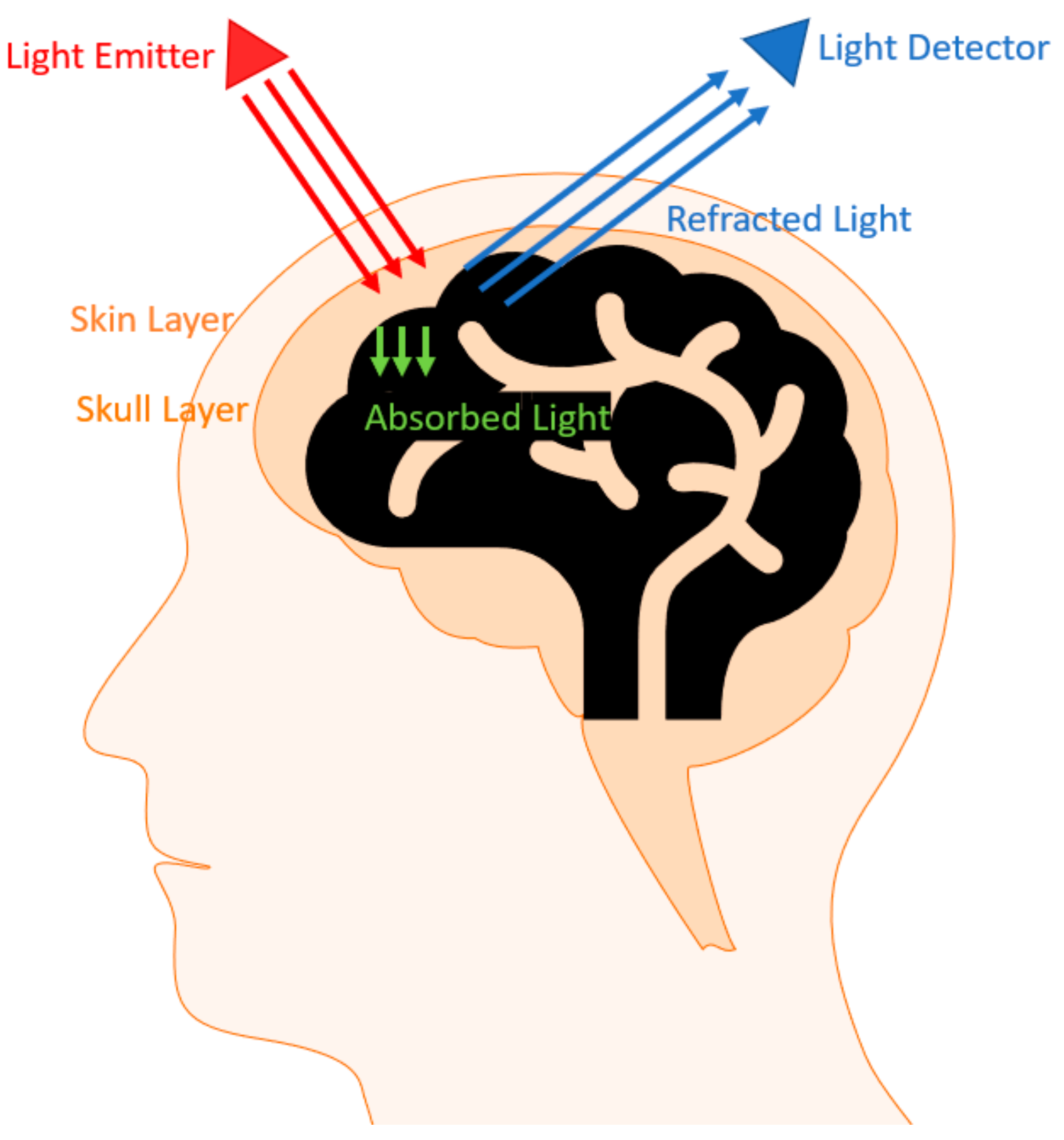

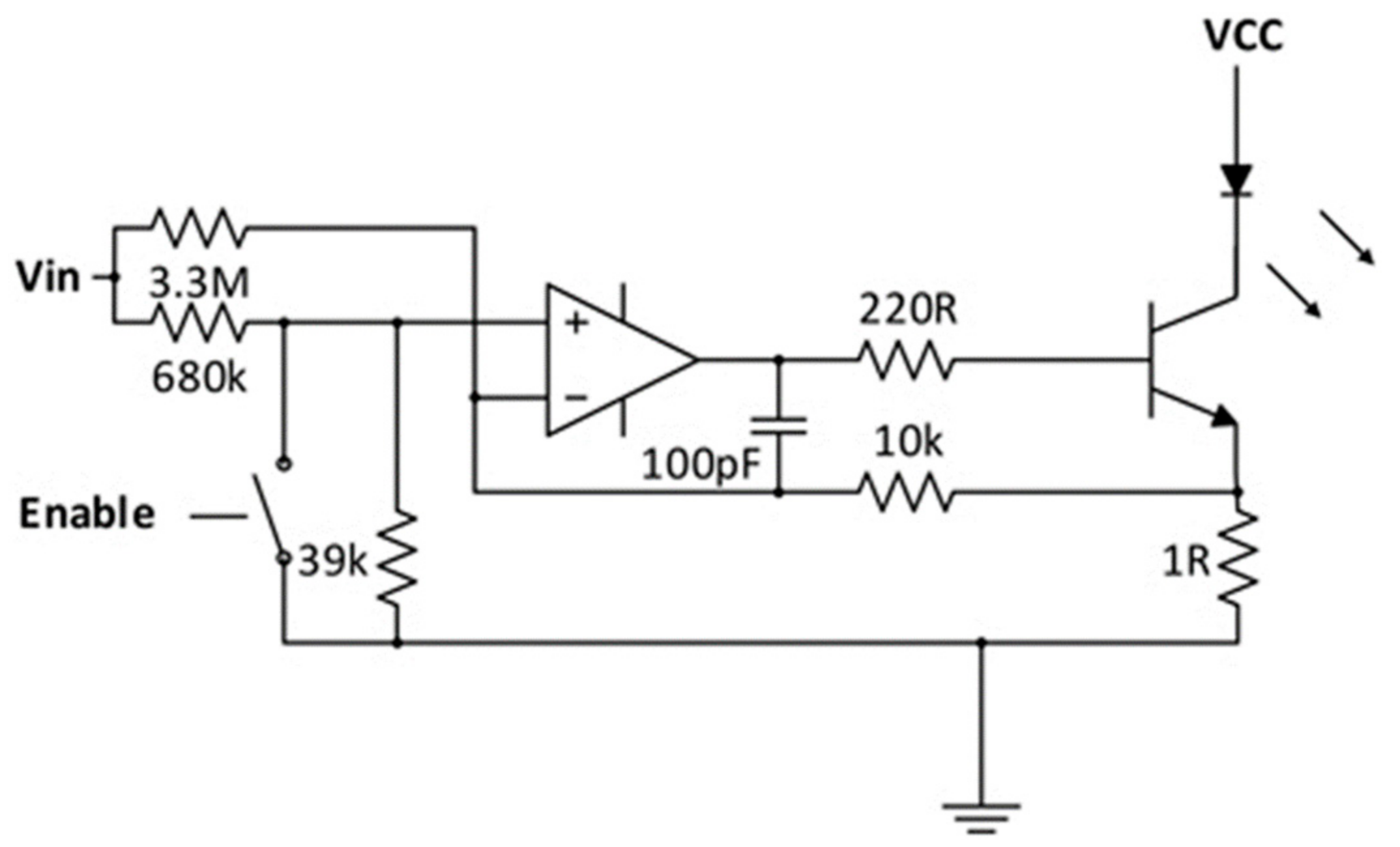

| Year | Major Events |
|---|---|
| 1977 | Jöbsis demonstrates the possibility to detect changes in adult cortical oxygenation during hyperventilation by near-infrared spectroscopy. |
| 1985 | First NIRS clinical studies on newborns and adult cerebrovascular patients (Brazy; Ferrari). |
| 1989 | First commercial single-channel CW clinical instrument: NIRO-1000 by Hamamatsu Photonics, Japan. |
| 1991/1992 | First fNIRS studies carried out independently by Chance, Kato, Hoshi, and Villringer by using single-channel instruments. |
| 1993 | Publication of the first 6 fNIRS studies. |
| Simultaneous monitoring of different cortical areas by 5 single-channel instruments (Hoshi). | |
| 1994 | First application of fNIRS on subjects affected by psychiatric disorders by using a single-channel system (Okada). |
| Hitachi company (Japan) introduces a 10-channel CW system (Maki). | |
| First simultaneous recording of positron emission tomography and fNIRS data (Hoshi). | |
| 1995 | First evidence of a fast optical signal related to neuronal activity (Gratton). |
| First two-dimensional image of adult occipital cortex activation by a frequency domain spectrometer (Gratton). | |
| 1996 | First simultaneous recording of fMRI and CW fNIRS data (Kleinschmidt). |
| First simultaneous recording of fMRI and TRS fNIRS data (Obrig). | |
| 1998 | First application of fNIRS on newborns using a commercial single-channel CW system (Meek). |
| First images of the premature infant cortex upon motor stimulation by using a CW–fNIRS prototype (Chance). | |
| First application of the Hitachi 10-channel system in clinics (Watanabe). | |
| 1999 | First introduction of a 64-channel TRS system for adult optical tomography (Eda). |
| First introduction of a 32-channel TRS system for infant optical tomography (Hebden). | |
| First optical tomography TRS images of the neonatal head (Benaron). | |
| Introduction of the first compact 8-channel TRS system (Cubeddu). | |
| TechEn company (USA) starts to release its first fNIRS commercial system. | |
| 2000 | Hitachi company starts to release its first commercial system: (ETG-100, 24 channels). |
| 2001 | First fNIRS study using a single-channel CW portable instrument and telemetry (Hoshi). |
| Shimadzu company (Japan) starts to release its first commercial system: (OMM-2001, 42 channels). | |
| ISS Inc. (USA) starts to release the frequency domain system: Imagent (up to 128 channels). | |
| First three-dimensional CW tomographic imaging of the brain (DYNOT, NIRx Medical Technologies, US) (Bluestone). | |
| 2002 | Hitachi company starts to release the ETG-7000 (68 channels). |
| 2003 | Hitachi company starts to release the ETG-4000 (52 channels). |
| Artinis company (The Netherlands) starts to release the Oxymon MkIII (up to 96 channels). | |
| 2004 | Shimadzu company (Japan) starts to release the NIRStation (64 channels). |
| First simultaneous recording of DC-magnetoencephalography and CW fNIRS data (Mackert). | |
| 2005 | Hitachi company starts to release the ETG-7100 (72 channels). |
| 2007 | Shimadzu company starts to release the FOIRE-3000 (52 channels). |
| 2009 | fNIR Devices company (USA) starts to release a wearable 16-channel system for adult PFC measurements. |
| Hitachi company starts to release a battery-operated wearable/wireless 22-channel system for adult prefrontal cortex measurements. | |
| 2011 | NIRx Medical Technologies company (USA) starts to release a battery-operated wearable/wireless 256-channel system for adult frontal cortex measurements. |
Publisher’s Note: MDPI stays neutral with regard to jurisdictional claims in published maps and institutional affiliations. |
© 2021 by the authors. Licensee MDPI, Basel, Switzerland. This article is an open access article distributed under the terms and conditions of the Creative Commons Attribution (CC BY) license (https://creativecommons.org/licenses/by/4.0/).
Share and Cite
Paulmurugan, K.; Vijayaragavan, V.; Ghosh, S.; Padmanabhan, P.; Gulyás, B. Brain–Computer Interfacing Using Functional Near-Infrared Spectroscopy (fNIRS). Biosensors 2021, 11, 389. https://doi.org/10.3390/bios11100389
Paulmurugan K, Vijayaragavan V, Ghosh S, Padmanabhan P, Gulyás B. Brain–Computer Interfacing Using Functional Near-Infrared Spectroscopy (fNIRS). Biosensors. 2021; 11(10):389. https://doi.org/10.3390/bios11100389
Chicago/Turabian StylePaulmurugan, Kogulan, Vimalan Vijayaragavan, Sayantan Ghosh, Parasuraman Padmanabhan, and Balázs Gulyás. 2021. "Brain–Computer Interfacing Using Functional Near-Infrared Spectroscopy (fNIRS)" Biosensors 11, no. 10: 389. https://doi.org/10.3390/bios11100389
APA StylePaulmurugan, K., Vijayaragavan, V., Ghosh, S., Padmanabhan, P., & Gulyás, B. (2021). Brain–Computer Interfacing Using Functional Near-Infrared Spectroscopy (fNIRS). Biosensors, 11(10), 389. https://doi.org/10.3390/bios11100389





